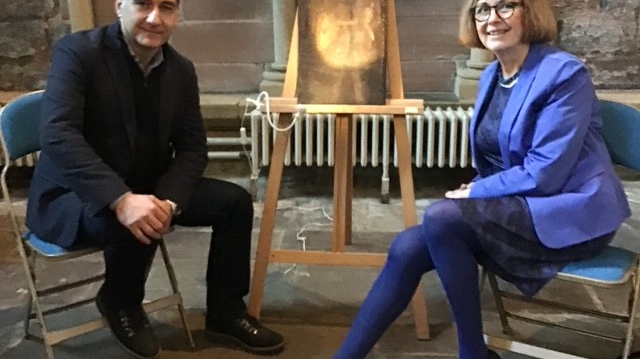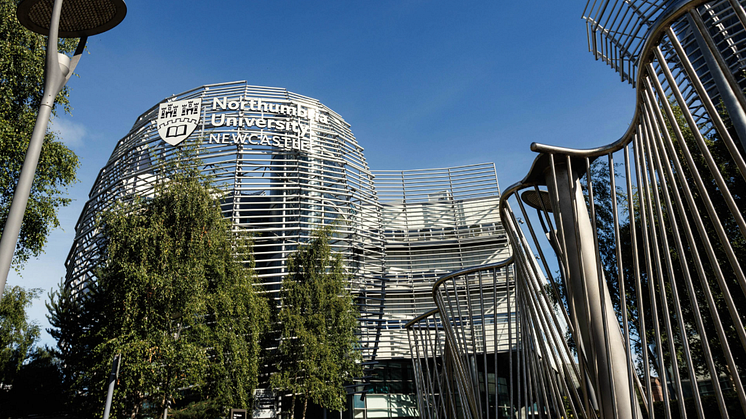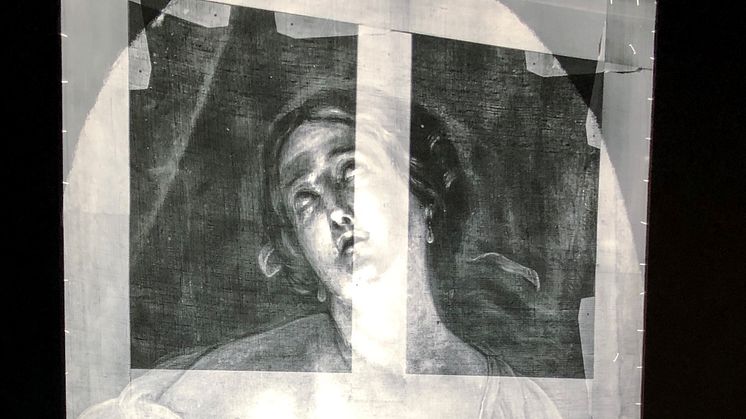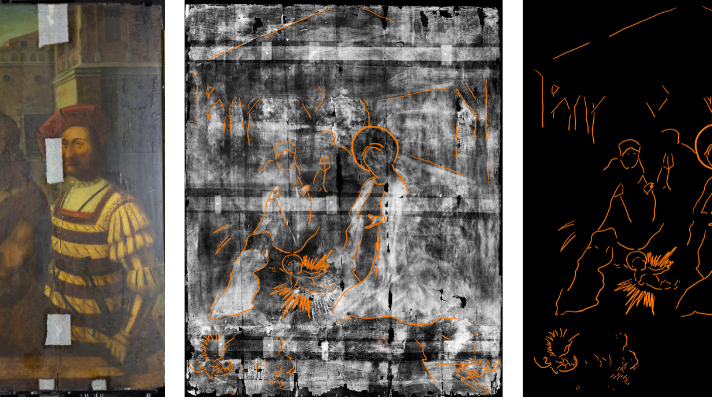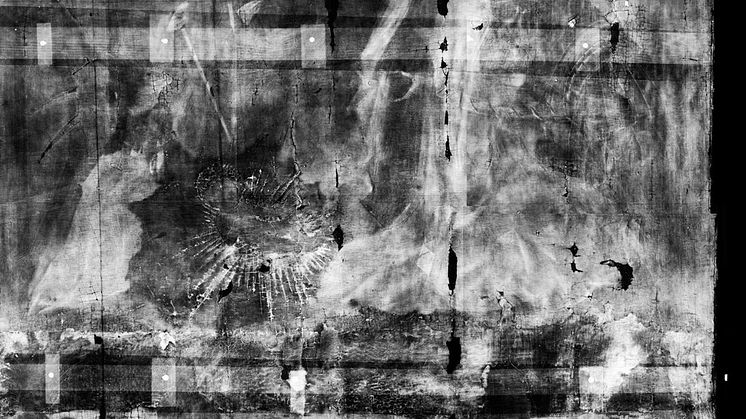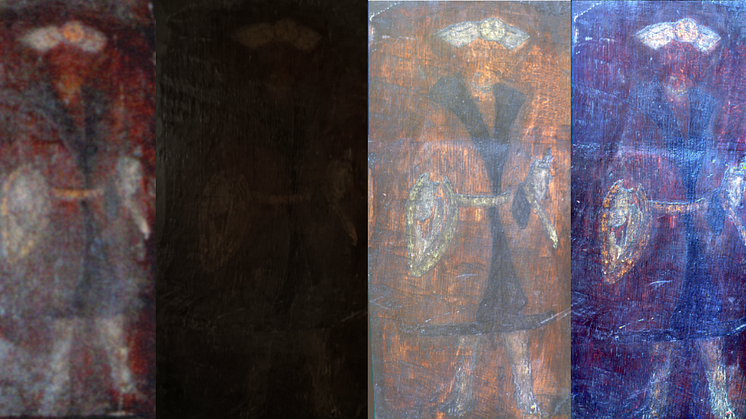
Press release -
Possible lost ‘Dance of Death’ painting discovered at Hexham Abbey
A wooden panel, found in Hexham Abbey after being lost for more than 30 years, could be the missing part in a series of medieval panel paintings – according to art conservators using state-of-the-art multispectral imaging technology.
The painting is believed to be part of the Dance of Death sequence, a series of four surviving wooden panel paintings dating back to around 1500, which illustrate Death visiting powerful figures, including a cardinal, a king, an emperor, and the pope.
For centuries, scholars and art historians had speculated about the existence of a fifth panel, thought to depict the ‘introducer or caller’ introducing the sequence, following a 1790s sketch by antiquarian John Carter.
Then in 2017 a wooden panel, which had not been seen since the 1990s, was discovered in Hexham Abbey’s triforium – an area of the Abbey rarely visited due to its inaccessibility.
The panel was in a poor condition, with the surface heavily discoloured, and so the Hexham Abbey Conservation Group enlisted the expertise of Dr Charis Theodorakopoulos, a heritage scientist at Northumbria University.
Dr Theodorakopoulos carried out a non-invasive examination of the panel, using a camera developed by spectral imaging specialists XpectralTEK. Using a wide range of wavelength bands from across the electromagnetic spectrum, from the near ultraviolet to the infrared. XpeCAM imaging solution is designed to capture different layers of an artwork, from surface varnishes, through the various paint layers to the underdrawings beneath, confirming which materials have been used to produce the colours.
By merging images of the panel taken at three wavelength bands representing red, green and blue light, Dr Theodorakopoulos was able to identify the image hidden beneath decades of grime – that of a figure in Tudor dress, thought to be the ‘caller’ featured on the introductory panel in the Dance of Death series.
In addition, the XpeCAM camera was also able to provide insight into the layers of medieval pigments hidden beneath centuries of discoloured varnish. By comparing these spectra with established pigment databases, Dr Theodorakopoulos was able to identify the panel's original colours and strengthen the theory that it is connected to the other panels in the Dance of Death series.
The study also involved statistical analysis to simulate the removal of discoloured varnish, enabling the team to virtually restore the painting's vibrant colours.
Speaking about the research, Dr Theodorakopoulos said: “The investigation involved non-destructive multispectral imaging, which allowed us to examine the paint layers without extracting samples from the panel. The discovery of this panel that may belong to the Dance of Death series of paintings is a monumental achievement for Hexham Abbey and for art conservation. This is not only a rediscovery of an important piece of art history, but it also demonstrates the potential of modern technology in unlocking the secrets of our cultural heritage."
Dr Tom Kelsey of Hexham Abbey added: “The technical skills that Dr Theodorakopoulos and Northumbria University brought to our investigations cannot be underestimated. Melding together the spectral analysis and the history of the Abbey’ s mediaeval art collection has proved so helpful – and will be of enduring interest to many academics and interested observers.”
The research was carried out in 2018 in partnership with Hexham Abbey Conservation Group and will now feature as a case study in a webinar being given by Dr Theodorakopoulos and XpectralTEK, taking place on Wednesday 30 April at 3pm.
Speaking about the technology and its potential for use across a wide variety of sectors, Antonio Cardoso, CEO and co-founder of XpectralTEK said: Spectral Imaging linked to AI as a cloud-based solution is today used from agriculture to materials identification and study in a surface. In this particular case XpeCAM contributed to gaining a deeper understanding of the materials surface, bringing to light most of the information hidden by time.”
The possible existence of a fifth painting in Hexham Abbey’s Dance of Death series had been discussed for hundreds of years. A sketch by John Carter from the 1790s depicts an identical figure to that hidden on the rediscovered panel, and in his 1888 book The Abbey of St Andrew Hexham. A Monograph, Charles Clement Hodges describes a visit by a Mr Hutchinson in 1774, who admired the panels in the north end of the church and in particular, “...the five centre ones...” which “… are a portion of the scenes from the Dance of Death and have frequently been commented upon.”
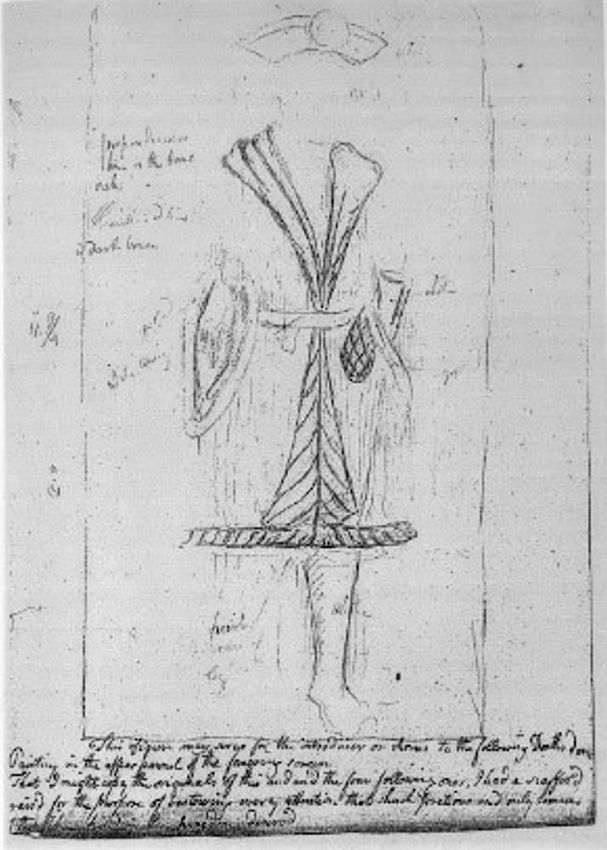
It is not known for certain whether there were originally additional images in the sequence in addition to those housed in Hexham Abbey.
These panel paintings, unique in British church art, offer a striking and poignant depiction of the medieval perspective on life and death, with Death represented as a skeletal figure visiting individuals from various walks of life, regardless of their social status.
Hexham Abbey's Dance of Death panels are considered some of the most important surviving examples of medieval English panel painting, a genre that was particularly vulnerable to destruction during periods of religious reform, such as the Protestant Reformation in the 16th century.
Dr Charis Theodorakopoulos will discuss this research during an online talk entitled, Multispectral imaging analysis in cultural heritage: The Hexham Abbey panel case, with reference to future AI data validation, taking place on Wednesday 30 April at 3pm. Register here to attend the online event.
Find out more about studying Conservation of Fine Art MA at Northumbria University.
Read the paper Recent studies of the Hexham Abbey painting collection by Dr Thomas Kelsey and Dr Charis Theodorakopoulos to find out more about this research and other paintings housed within the Abbey.
Topics
Categories
UNIVERSITY OF THE YEAR 2022 (Times Higher Education Awards)
Northumbria is a research-intensive university that unlocks potential for all, changing lives regionally, nationally and internationally.
Two thirds of Northumbria's undergraduate students come from the North East region and go into employment in the region when they graduate, demonstrating Northumbria's significant contribution to social mobility and levelling up in the North East of England.
Find out more about us at www.northumbria.ac.uk
--- Please contact media.communications@northumbria.ac.uk with any media enquiries or interview requests ---








